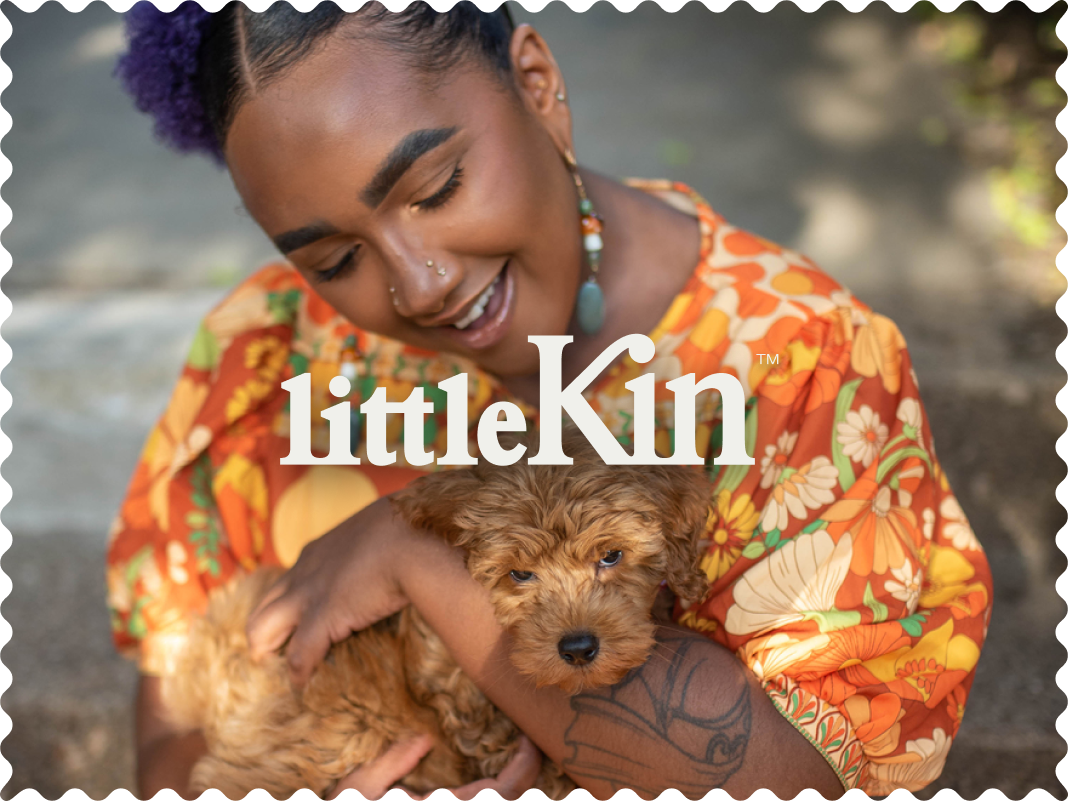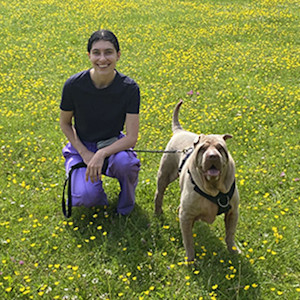Is Daycare Overwhelming Your Dog? How to Spot the Signs
There’s such thing as too much play

Share Article
Most dogs will go to daycare at least once in their lives. It’s meant to be a nice place where they can have fun, make dog friends and not feel lonely waiting at home by themselves.
But did you know that daycare can have a big impact on some dog’s behaviour – and not necessarily in a good way? As a behaviourist, I have noticed a number of behavioural issues in dogs who regularly go to daycare. And I’m not the only one noticing a potential link. Here‘s how to make sure your daycare is right for your dog.

littleKin™ is Kinship’s home just for puppy and kitten parents. Bop over to check out expert advice, new pet tools, and special deals—all curated for your newest family member.
opens in a new tabThe upside of doggy daycare
Firstly, let’s start by saying that a good daycare can be a great place for your dogopens in a new tab to socialise and learn various skills. Also, let‘s be real, for many dog parents, daycare is a necessity – as much as you‘d like to spend 24 7 with your pup – life and work have a habit of getting in the way.
“We will take the puppies on post-vaccination,” explains Brian Holmes from Camp K9, a Surrey-based professional daycare. “Our job is then to contribute as positively as we can to their development which means building their confidence with people, with other dogs and more generally in experiencing new environments and experiences.”
“You have to balance that with ensuring they are not over-exercising as they grow, and getting enough rest and nutrition in the time they are with you.” Doing all that, he adds, can set dogs up “for a much more balanced and stable adolescence”.
The downside of doggy daycare
But there is a flip side, of course. As Brian explains: “Some dogs may become overwhelmed, overstimulated, not rested enough and have bad experiences.” Without structure and opportunities for downtime, they can become pretty stressed out.
Some of my clients have noticed their dogs barking at anything and everything the day after they’ve been to daycare. One dog even appeared to want to escape, biting a member of staff who tried to bring him back in.
Many professionals agree that teenage dogsopens in a new tab – who are often in their chaotic era – can be particularly tricky. “I’ve had a lot of cases where dogs that are put into daycare as adolescents become dog-reactive,” says behaviour consultant Holly Leakeopens in a new tab.
“Some dog daycares aren’t grouping dogs according to size or age – so there are dogs going through fear periods mixing with other dogs that are hyper social,” says Holly.
In fact, Holly doesn’t recommend daycare at all during the period of adolescence, “because you are already dealing with behaviour regression and dog daycare often seems to intensify these issues”.
What are the warning signs a daycare might not be right for your dog?
So, how do you know if your daycare may be doing more harm to your dog than good? Every dog is different, so what might affect one pup might not necessarily affect another. It’s all about recognising your dog’s personal situation and how they react to external stimulation.
There are some big misconceptions about dogs – namely that they’re “pack animals” – that means they can be placed in large groups that can be difficult for staff to properly monitor. This can result in some stressed-looking pups who don’t have the ability to escape if they feel overwhelmed.
If some dogs can’t move away or their subtler stress signalsopens in a new tab aren’t listened to, they may resort to using aggression in order to create space. That learned behaviour can then be transferred to other environments when they’re back home or on walks with their parents.
If your dog is on the other side of the coin, always wants to play and is always given the opportunity to do that, they may become more fixated on other dogs. And that can contribute to them rudely rushing towards other dogs on walks or straining at the end of the lead to get to them.
Here are some of the behavioural signs to look out for when your dog comes home from daycare:
Struggling to relax and settle or come back down when they’re excited.
Becoming less responsive to you and more fixated on things in the environment, such as other dogs.
Barking and lunging at things when on the lead, which can be due to feeling worried and wanting to get away, or frustrated and wanting to get closer.
Not being able to recall back to you when asked.
Boisterous, or even ‘bullying’, behaviour when interacting with other dogs.
Excessive barking either inside or outside of the home.
Excessively tired at home.
Frequent ‘minor’ injuries such as strains and lameness.
You can also ask daycare staff what your dog is like while there. If they say your dog seems quite shy or stays on the periphery despite having been attending for a while, they may not be feeling comfortable. Conversely, if your dog is described as being a bit enthusiastic for the other dogs, that may be a warning sign they are not learning the right kind of social skills.
Finding a decent daycare
Lots of these problems can be alleviated by finding the right kind of daycareopens in a new tab for your dog. “For example, a field-based daycare may allow a situation where dogs can run around outside all day and go home exhausted, but it might not do anything to help that dog develop better social skills,” says Brian. “The same dog may get too frustrated at the limitations of an indoor facility, or be too disruptive in a smaller home environment.”
The first step then is to find the right kind of environment for your dog. Ask how many dogs are together and how many staff there are to look after those dogs. “Fewer dogs means better supervision and a more individualised approach,” explains Jane Burton, a trainer who rethought the typical daycare model and created Paws 4 A Day Schoolopens in a new tab in Rotherham to provide a structured, training-based daycare. Staff should also be trained in reading dog body language and appropriate, reward-based handling methods.
Then, get an idea of how the daycare structures their days, including how long play sessions are, whether they’re supervised and if dogs get breaks to rest. “Instead of endless play, we prioritise calming activities such as scentwork and food-based enrichment to promote relaxation,” says Jane. You should be able to arrange a trial day or two to see how your dog gets on and so you can check out the facilities and see how the other dogs look and act.
You’ll also want to understand:
How the daycare introduces new dogs to the group.
Whether dogs are split by age or play style.
How they help dogs who may be struggling.
How they keep pet parents up to date on what happens at daycare, and how often.
How they’ll meet the needs of your individual dog. For example, what about any health issues that need to be taken into account?
Finally, ask them how you can monitor how your dog is doing. Some daycares have private groups where they share photos and videos; others may give individual updates at the end of each day.
What to do if daycare is overstimulating your dog
Behaviour is complex and we couldn’t say for definite either way that a daycare is solely to blame for a dog’s behavioural issues. “How much influence a daycare has will depend on things such as the age of the dog, their temperament going in, whether they have previous experiences elsewhere, their breed and how much time they spend in daycare,” explains Brian. “And you have to balance all that against outside influences.”
However, if you’re concerned, keep a diary to note your dog’s behavioural patterns throughout the week. If they seem worse on the day of daycare or subsequent days, consider reducing how often they go or having a short-term break to see if it makes a difference. Alternatively, think about finding a different type of daycare that better suits your dog’s needs.
Remember that daycare isn’t right for every dog. Other options do existopens in a new tab; such as dog walkers who can take your dog out in small groups or on a one-to-one basis. Or pet sitters who can spend more time at home with your dog while you’re out. Finding the right petcare option for your pup is the best way to ensure you‘re both happy and healthy.

Lauren Sharkey
Lauren Sharkey is a journalist-turned-dog behaviourist who runs Winnie’s Worldopens in a new tab: a training and behavioural company that aims to give dogs and their pet parents the life they deserve. She shares her life with a Shar Pei named Winston, who is the inspiration for her career change along with being her biggest love (and challenge!).
Related articles
![Tibetan Spaniel dog sitting in a suitcase]() opens in a new tab
opens in a new tabSo You’re Off On Holiday – Here’s How to Prepare Your Dog for a Daycare Staycation of Their Own
A guide to a stress-free break – for you and your pup
![Beagle dog lying on a suitcase]() opens in a new tab
opens in a new tabWhat to Do With Your Dog When You Go Away On Holiday
Whether you’ve got a laid-back Lab or a temperamental Terrier, there’s a pet care option for everyone

